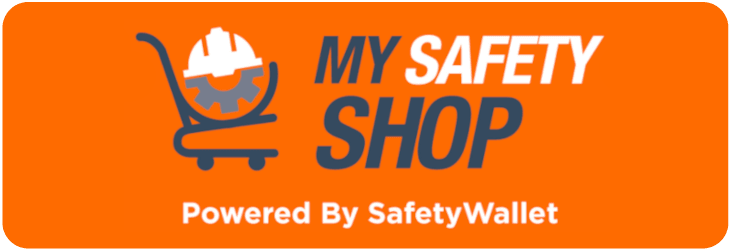The Employer (client) - The Contractors - The Section 37(2) Agreement and Legal Liability
Introduction
There may be a substantial amount of misconception where the employer (client), the contractors, and the Section 37(2) agreement and legal liability is concerned. Should a contractor be conducting work on behalf of the employer and they have signed an agreement in terms of Section 37(2) of the Occupational Health and Safety Act, who is responsible for the health and safety of contractors on the client’s site?
This can be answered by having an in-depth look at the term ‘vicarious liability’ alongside Section 37(2) of OHSA along with Section 9 of the same Act.
If you have any questions, please feel free to speak to one of our Experts
Vicarious Liability – what it is and what it means for the employer (client)
It is imperative for the employer, or client, and their organisation to understand the basic principles included in the doctrine of vicarious liability.
Employers are vicariously liable, as according to the respondent superior doctrine, where negligent acts or omissions by their employees are concerned during their employment, otherwise known as the ‘scope of their employment’.
However, for an act to be considered as within the course of employment it must be an act that is either authorised or it must be connected to an authorised act. Only then can it be considered a mode, though an improper mode, of performing such an act.
Thus, should an employee act negligently while they perform their prescribed duties, and they cause damages to a third party, their employer will be liable to compensate the third-party for the damages that were caused.
This form of liability, in common law, is also known as ‘liability without fault’ as the employer may not have committed the act themselves, but they are still held liable as the employee is in their charge and performing their prescribed duties.
Section 37(2) of the Occupational Health and Safety Act
In summary, Section 37(1)(c) of the Occupational Health and Safety Act (85 of 1993) states that should an employee commit a contravention with the Occupational Health and Safety Act, the employer will be presumed to have done, or omitted, that act, and the fact that the employer issued the instructions forbidding any act or omission will not be accepted as enough proof that the reasonable steps to prevent the conduct were taken.
Furthermore, Section 37(2) further states that the situation as stated above also applies in the case of mandataries, or contractors, unless the parties (client and contractor) have agreed, in writing, to the arrangements as well as procedures between them.
This is to ensure that the contractor will comply with the Occupational Health and Safety Act, which is why the Section 37(2) agreement is crucial. It is imperative that both the client and the contractor understand the implications of Section 37(2) agreement.
However, it should be noted that this agreement only excludes the organisation of the client from liability if, and when, the contractor themselves contravene the Act. Through this, vicarious liability in respect of contractors is excluded.
Section 9 of the Occupational Health and Safety Act
Section 9 provides employers with a duty to ensure that all persons excluded from their employment, such as contractors, are not exposed to any health and safety hazards and risks.
Therefore, it is understood that organisations are held responsible to ensure that contractors are safeguarded from hazards while they carry out tasks on behalf of the client, even if they are held to the Section 37(2) agreement between the client and contractor.
In addition, the Construction Regulations (2014) also tasks clients with managing, auditing, and supervising contractors on their sites. However, this makes it unclear whether it was the intention of the legislator that an organisation escapes liability associated with the health and safety of their contractors by signing the 37(2) agreement.
It instead only places limits on the ability of the employer in cases where the contractor should contravene the Act. The employer, or client, remains responsible to ensure that all parties on their premises or worksite are safeguarded from hazards, meaning that the client may face penalties in failing such duties.
It is for this reason that there are stringent rules and regulations in place and that clients, as the employer, must ensure that they adhere to the requirements of the Occupational Health and Safety Act, and that they have an effective health and safety management programme in place.
How can SafetyWallet help Employers and Contractors’ Health and Safety Compliance?
In a world which is constantly changing, with new and stricter regulations, it is becoming increasingly difficult to always ensure full compliance. SafetyWallet helps and supports its subscribers despite the industry in which they operate or the number of employees and contractors under their responsibility.
SafetyWallet, in partnership with MAKROSAFE and OHS Online, ensures that subscribers can obtain the highest level of compliance with the Occupational Health and Safety Act, all other legislation, and get rewards.

MAKROSAFE / SAFETYWALLET / MY SAFETY SHOP are all in Partnership.

-The-Employer-(client)---The-Contractors---The-Section-37(2)-Agreement-and-Legal-Liability-Banner-1.jpg)
Comments (2)
Interesting Article. Thanks for sharing this wonderful article
2023-01-30 13:47:11Thank you for taking your time to read our wonderful and interesting article, we really do appreciate it... We have, especially for you, with Love, a FREE download of the Section 37.2 Mandatory Agreement Template: https://www.mysafetyshop.co.za/Products/Free-Download---Section-37-2-Agreement-Template
2023-01-31 07:34:06Hi, Can an external safety consultant be granted permission to issue PTW on behalf of the client? If so, can the consultant be liable for incident that happens as a result of violation PTW conditions by contractors?
2024-03-07 12:27:50Hi Jean. While an external consultant could be given the authority to issue PTWs, the primary responsibility for ensuring a safe workplace typically remains with the client. However, the consultant could be held accountable for their direct actions or negligence.
2024-03-08 07:41:38